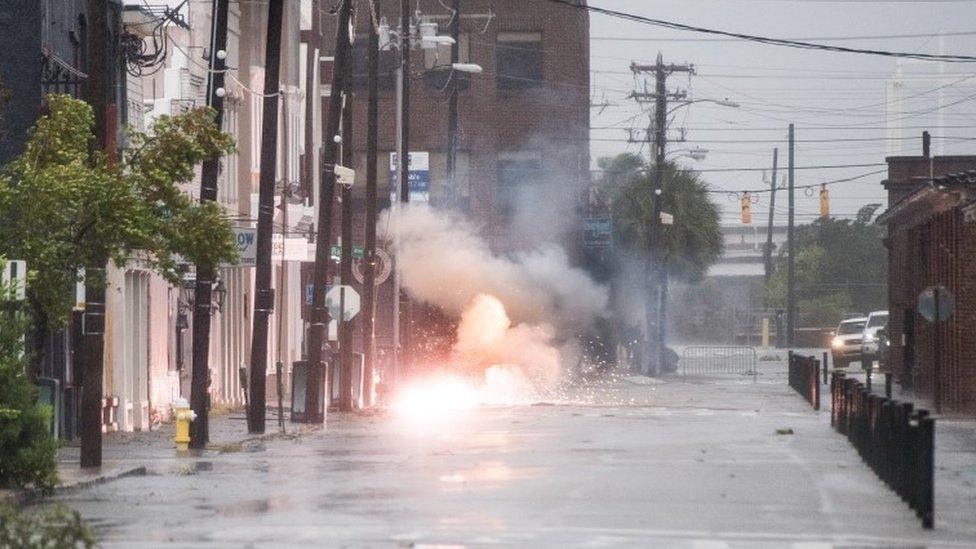Hurricane Dorian: Rescue efforts stepped up as storm survivors flee
- Published
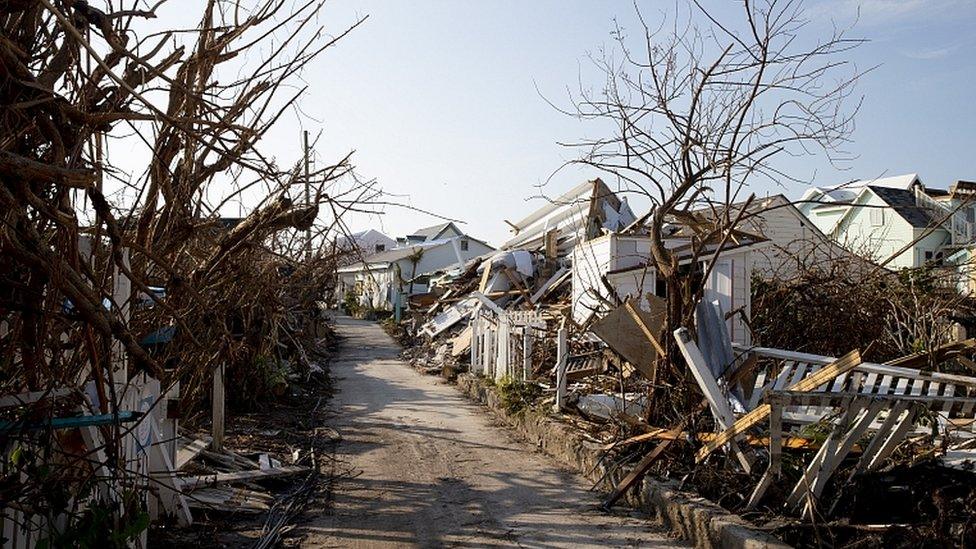
Many homes in the Abaco Islands were smashed to pieces by the storm
Rescue efforts have been stepped up in parts of the Bahamas worst hit by Hurricane Dorian, as hundreds scramble to flee the destruction.
Cruise liners, private planes and helicopters are all being used to help those still trapped in the Abaco Islands and Grand Bahama.
The death toll stands at 43 but is expected to increase further.
Meanwhile, Dorian has gained strength off the US east coast and is heading to the Canadian province of Nova Scotia.
US forecasters said on Saturday that the storm had sustained winds of 100mph (155 km/h) and had increased from a category one to a category two hurricane.
Dorian was at category five when it made landfall in the northern Bahamas last Sunday with winds reaching 185mph.
Officials believe hundreds of bodies are yet to be found in areas flattened by the winds or smashed by storm surges.
Have you been affected by Hurricane Dorian? Email haveyoursay@bbc.co.uk, external
Dr Caroline Burnett-Garraway, medical chief of staff at Princess Margaret Hospital in the capital Nassau, said two refrigerated trucks were being sent to the area, adding: "We've ordered lots of body bags."
What's the latest?
Thousands of survivors have been lining up in Freeport, Grand Bahama, hoping to board cruise ships offering free passage to Florida. There were similar scenes in Marsh Harbour, Great Abaco, where people queued for private boats to take them to safety.
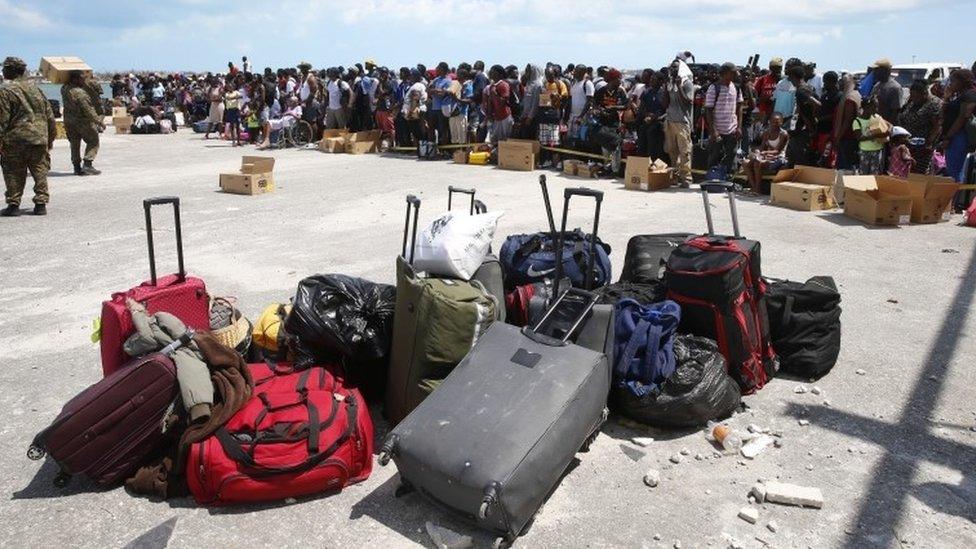
Hurricane survivors waited to be evacuated in private boats at Marsh Harbour on Great Abaco
Evacuees from Great Abaco have been arriving in Nassau, bringing with them stories of worsening conditions in the storm-ravaged islands.
At the main Abaco airport on Saturday, Chamika Durosier was hoping to find a plane to safety.
"The home that we were in fell on us. We had to crawl - got out crawling," she said.
"It's been almost a week and people are still here. People have no food. People have no water. Dead bodies are still around and it's not sanitary."
How is the relief effort going?
UN officials said about 70,000 people in Grand Bahama and the Abaco Islands were in need of assistance.
On board a UK ship offering aid and rescue to the Bahamas
The World Food Programme (WFP) said about 90% of homes, buildings and infrastructure in Marsh Harbour were damaged and that thousands of residents were sheltering in a government building, a medical centre and an Anglican church with meagre supplies.
"The needs remain enormous," said WFP spokesman Herve Verhoosel. "Evacuations are slowly taking place by ferry, as hundreds of residents reportedly flee daily."
The Royal Navy said it was deploying 18 extra medical staff to join the ship RFA Mounts Bay that has been delivering aid since the storm passed. Another UK ship, HMS Protector, is taking on supplies in Bermuda and will sail to the Bahamas on Monday.
Survivors of the hurricane say there is utter devastation
The US Coast Guard said it had sent nine cutters to the islands and that six of its helicopters had rescued 290 people so far.
Where is the hurricane now?
Dorian is churning northwards along the Atlantic coast of North America, and has been battering eastern US states as it heads towards Canada.
At 14:00 local time on Saturday (18:00 GMT) the storm was about 180 miles (290 km) south-east of Eastport, Maine, external, and heading for the Canadian province of Nova Scotia.
The Canadian Hurricane Centre predicted landfall near Halifax, Nova Scotia, later on Saturday and issued hurricane warnings for parts of Nova Scotia and Newfoundland.
Canadian broadcaster CBC said thousands of residents in Nova Scotia had lost power on Saturday morning as high winds and heavy rain swept in.
The US National Hurricane Center (NHC) warned of storm surges in the Gulf of St Lawrence, the south-west Coast of Newfoundland and eastern Nova Scotia.
On Friday, hundreds who refused to evacuate Ocracoke Island in North Carolina were stranded when the hurricane made landfall there.
- Published6 September 2019
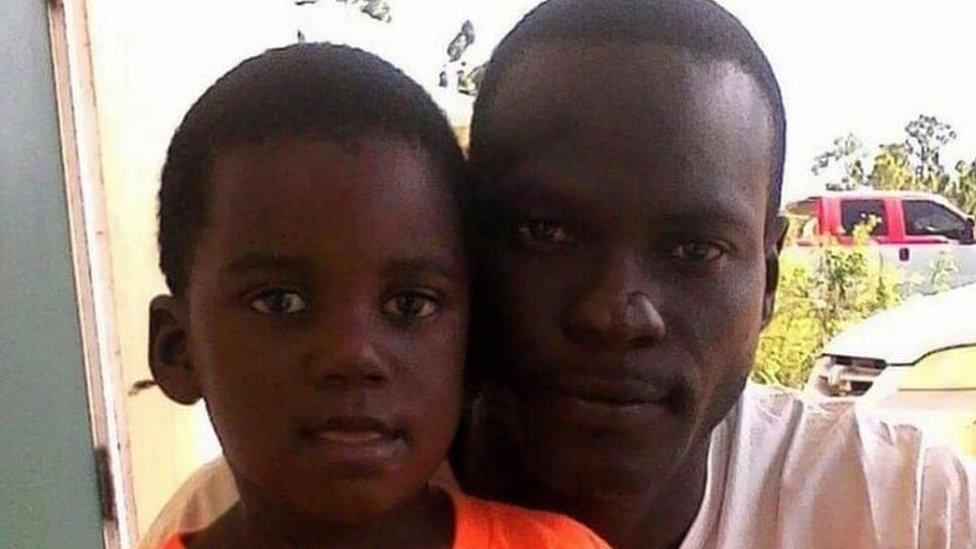
- Published5 September 2019

- Published3 September 2019
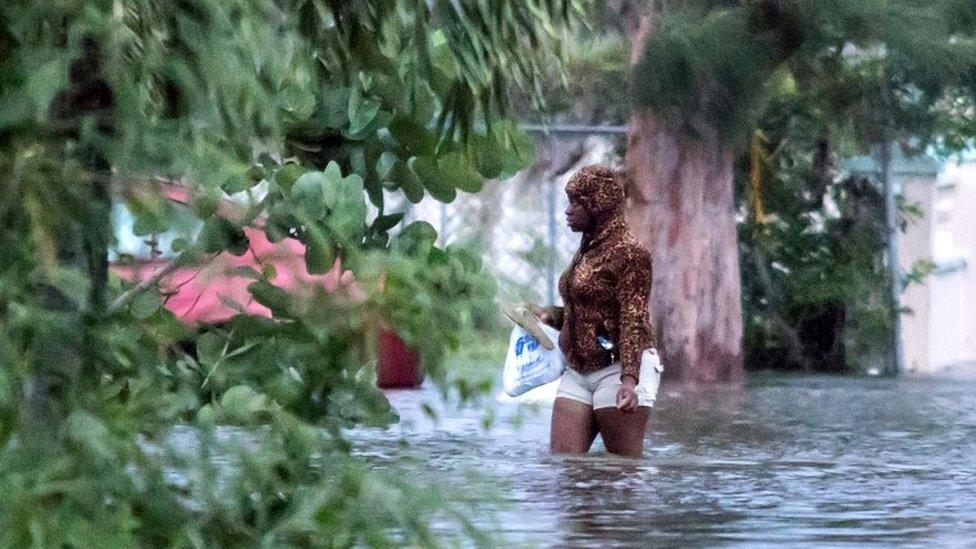
- Published6 September 2019
